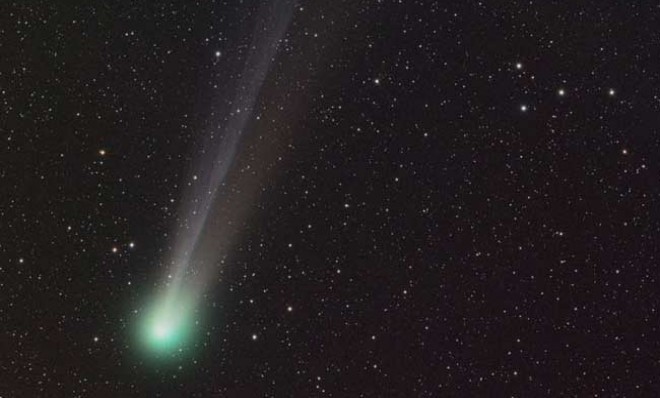The massive comet that may shine brighter than the moon in 2013
Astronomers are geeking out over a streaking object called ISON

Don't be surprised when you look up this November and see an exceptionally bright object streaking across the night sky. It'll just be the Comet ISON, a large, luminous space rock that astronomers say has the potential to join 1996's Comet Hyakutake and 1997's Hale-Bopp as one of the brightest "Great Comets" in history. Indeed, ISON may go down as the brightest comet ever gazed upon by human eyes. Here's what you should know:
Why is it called ISON?
Russians Vitali Nevski and Artyom Novichonok are credited with first photographing ISON using a 15.7-inch reflecting telescope of the International Scientific Optical Network, or ISON, when it was still far, far away. Their initial snapshot is dated Sept. 21, 2011.
The Week
Escape your echo chamber. Get the facts behind the news, plus analysis from multiple perspectives.

Sign up for The Week's Free Newsletters
From our morning news briefing to a weekly Good News Newsletter, get the best of The Week delivered directly to your inbox.
From our morning news briefing to a weekly Good News Newsletter, get the best of The Week delivered directly to your inbox.
When will ISON be visible?
Beginning Oct. 14 and 15, ISON will begin to line up with Regulus, a bright blue star in the constellation Leo. By the end of the month, ISON should be visible to anyone with a pair of binoculars and might even be viewable with the naked eye. Over the course of November, the comet will truly come into its own, and should brighten up dramatically as it races toward the sun, where it's set to begin passing through the inner corona (a.k.a. the super-hot bonnet flaring around the sun) on Nov. 28.
How bright will it be?
It has the potential to go down as the brightest comet ever — and could briefly outshine even the moon. Of course, that's only if ISON doesn't shatter into fragments when it comes within 800,000 miles of the sun's surface. When it does, temperatures inside the comet's frozen, icy core will quickly shoot up to 2 million degrees Fahrenheit. The effect could be akin to pouring hot tea in a cold glass.
A free daily email with the biggest news stories of the day – and the best features from TheWeek.com
What are ISON's chances of surviving?
We just don't know. While some comets, like the Great Comet of 1882, broke into fragments after grazing the sun, others, like the Comet Lovejoy managed to escape the unimaginable solar heat in one piece.
But why will ISON be so bright?
Like the Great Comet of 1680, ISON is on a parabolic orbit, meaning it will scatter light forward as it moves away from the sun.
What's the best way to see it?
If ISON manages to survive its close encounter with the big fireball at the center of our solar system, the comet should be visible both day and night, for most of December 2013. At the very least, it will be about as bright as Venus and sport a spectacular tail stretching out tens of millions of miles. In fact, Earth is even expected to pass through this tail on Jan. 14-15, 2014, which may result in a large, dazzling meteor shower. Astronomers, both professional and amateur, are excited in any case, as ISON's passing could truly be "a once-in-a-civilization's-lifetime event."


